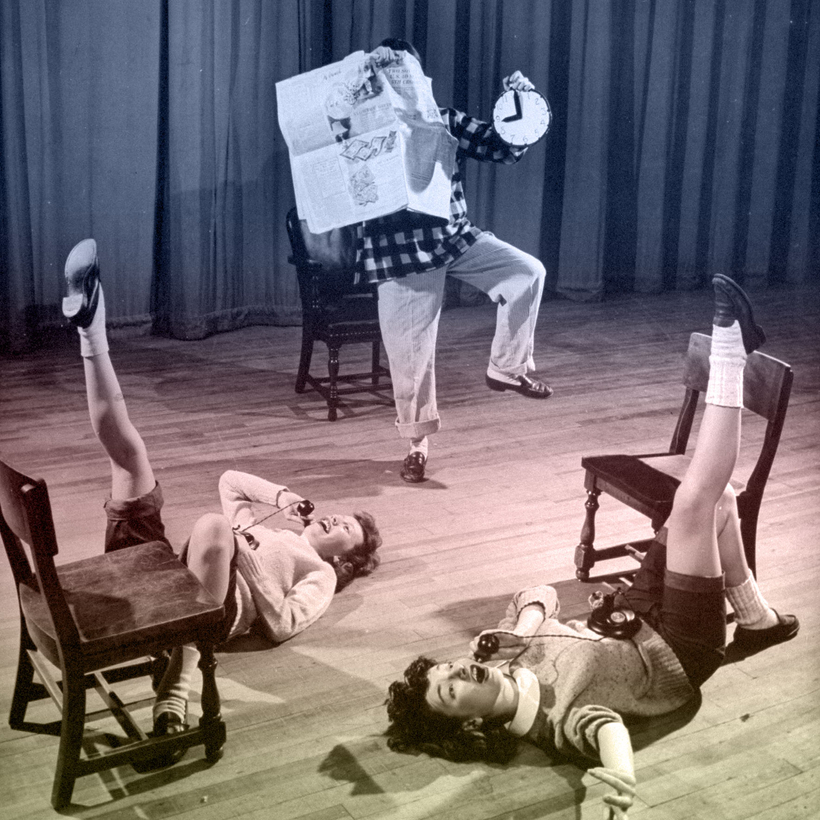If you were to glance at an 11th-grade teacher’s computer screen mid–Zoom class, you might not notice anything amiss. Like every other day of the week, it would be filled with bobbing faces, some smiling, some bored, some pissed. You’d have to really take a close look—and what teacher has time for this in the middle of a lesson?—to realize a handful of the faces haven’t moved an inch since the start of the class. That’s because certain students have replaced their live camera feeds with photos of themselves. Where they actually are, or what they’re actually doing, is anyone’s guess.
Welcome to Zoom school, the new reality for teenage kids around the world that brings a whole new set of unspoken norms and rules. With the younger kids, at least, there’s supervision. Parents have now added the role of teacher’s assistant to their repertoire, acting as boots on the ground on the students’ side of Zoom. But few parents have the stamina to supervise their high-schooler’s Zoom classes—and even fewer high-school kids can be persuaded to allow it.
Where teenagers in the classroom had the teacher watching over their shoulders, they now have no one, and they’re taking advantage of it. But the rules that ran the hallways haven’t really changed all that much.
The 411
It turns out the nerds have gotten nerdier, anxious to prove themselves now that staying after class or buying the teacher cookies is no longer an option. Giulia, 16, tells me that a handful of students still wear their school uniforms in her Zoom classes, despite the fact that the uniform requirement was lifted a year ago when schools closed.
The slackers are still slackers; now, instead of spacing out in class, they’re straight up falling asleep. “No one knows what’s happening most of the time,” says Sasha, 15. “People fall asleep every week.” Oftentimes snoring brings lessons to a standstill, with desperate teachers trying to shout students awake.
And Bebel, 17, says Zoom school is making shy kids even shier. “You know everyone’s listening as you speak, but you can’t actually see anyone,” she says.
Oftentimes snoring brings whole classes to a standstill, with desperate teachers trying to shout students awake.
Zoom-haps have become the new classroom blunders, and there are a lot of them. Nightmares about showing up to school stark naked are being replaced with those of embarrassing parents calling kids “sweet pea” or barging in in their morning robe while their cameras are on. Isabella, 15, tells me students are terrified of turning on their microphones.
Instead of the car that kids drive to school, or the clothes they wear, the new hot topic for bullying is home décor. “It’s not nice, but some people on group chats will comment on how ugly people’s houses are,” says Chloe, 14.
While content is being swapped at the maniacal speed of teenage fingers behind the scenes, students pretend to look into the camera with sheepish boredom. But slips do happen. Samuel, 15, recalls that a girl who assumed she was muted called another student in the class a “bitch,” realizing only afterward that she’d been at full volume. At Isabella’s school, one student forgot his microphone was on while commenting on the foreign-language teacher’s atrocious accent. Though the mute feature masks reality, occasionally things get through.
But how can teachers respond to online bullying? Zoom detention? It doesn’t exactly carry the same weight as Richard “You mess with the bull” Vernon of The Breakfast Club, and even that didn’t work.
Pretty in Pajamas
Of course, the popular kids are still finding ways to stay popular. Zoom’s ripped-jeans equivalent is bleary eyes and pajama tops. The cool kids make it clear that they woke up for an eight A.M. class at 7:58.
At Chloe’s school, all the “badasses” turn off their microphones and cameras mid-lesson despite explicit instructions to keep them on. At Isabella’s school, students replace their livestreams with static photographs of themselves at their desks. If they get caught, they blame technical issues. While the teacher thinks people are taking notes, streams of Snapchat selfies start. Group chats are the new paper-airplane notes.
Kids will wear respectable shirts on their top half, and then send pictures of their sequined shorts to others in the class. Memes of angry teachers are Photoshopped onto cartoon characters. Homework is, more often than not, shared in chats for copying—and so are exams. Elena, 16, describes how her Spanish teacher once made everyone close their eyes while answering questions in class. “Usually, everyone gets the answers because we text them to each other,” she says. “But when we closed our eyes only two people knew how to say ‘my father’ in Spanish.”
The group chat you are in is the new substitute for where you sat in the cafeteria. Which means that if you’re new, you have no way of making it in. “I definitely wouldn’t want to be a new kid right now,” Sasha says.
And then there are the Zoom-bombers. While disrupting class is harder to pull off in stricter private schools, in public schools with 20 students per class, disrupting is essentially guaranteed to be anonymous. Anyone can scream “Fuck!” mid-lesson without being identified. Though veteran teachers are accustomed to wayward students, they’re bound to be less skilled with online learning than the tech-savvy students they preside over. “People draw images of penises and stuff on the teacher’s online whiteboards, but the teacher doesn’t know who to punish,” says Tali, 14.
Group chats are the new paper-airplane notes.
Ottaviano, 14, recounts when someone logged in to his online class as “Zoom Assistance” and caused a beeping noise to go off on his computer. Other times passwords to meeting rooms are shared with people who aren’t even at the same school. Once, a student and his friend organized a comedic performance of a fake kidnapping after hacking into another student’s Zoom classroom. When hysterical teachers try to reprimand these pranksters, more cartoon collages of them are mashed up behind the scenes.
Zoom disruptors of every ilk tend to be the heroes of virtual school. YouTube has countless videos detailing how best to “hack” your class. Rumors about kids hacking the Italian public-school system have picked up steam in recent months, and students around the country refer to them with veneration. “I wish there was someone like that in my school,” Giulia says wistfully. The popular kids are making room for the I.T. wizards saving them from boring lessons and bad report cards.
There is a dark side: a student in Madison, Connecticut, was arrested and charged with fifth-degree computer crime and disturbing the peace after crashing several classes with obscene gestures and language.
Anyone can scream “Fuck!” mid-lesson without being identified.
On the whole, kids seem to want to go back to in-person learning. Many of those I spoke to tell me group chats simmer with speculation about the big day. “It’s secretly so exciting,” Chloe tells me. “What do we wear? What’s going to happen?”
But meanwhile, the cliques are getting cliquier, the bullies are getting meaner, and the disruptors are getting away with it all. You can take kids out of high school, but you can’t take high school out of kids. Though everything is smaller on-screen, the stakes are just as high.
Elena Clavarino is an Associate Editor for AIR MAIL


